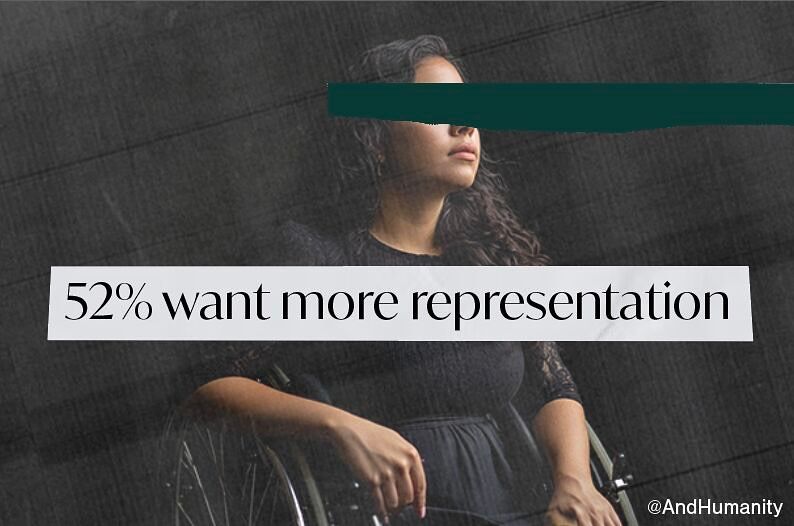To stay relevant and powerful in a dynamic marketplace, organizations are shifting to inclusive marketing. Not only is inclusive marketing good for business – but with younger consumers carrying more purchasing power, promoting inclusivity can be a major motivator for some when it comes to where and whom they choose to purchase products and services with.
However, inclusive marketing requires commitment and a genuine desire to incorporate diverse lived experiences. More importantly, your marketing needs to align with how your organization’s brand is perceived and experienced.
Regardless of where your organization might be in its inclusive marketing journey, here are a few common questions from clients that frequently arise about how to better integrate inclusivity into brand and marketing communications.
Acknowledging Dates of Significance
Dates of cultural or community significance occur throughout the year and may be connected with a specific day (e.g. National Day for Truth and Reconciliation) or span a period of time (e.g. Pride month). These may relate to but are not exclusive to equity and inclusion.
Why is acknowledging dates of significance important?
Days and months of significance are a way to raise awareness and action about historical, cultural and equitable practices that forward inclusion and nurture a sense of belonging. It is also important to note that inclusion is active. Meaning, it must be intentional and deliberate. Elevating equity-deserving voices and demonstrating actionable commitment to equity, diversity and inclusion is essential to authentic inclusion.
What is best practice for determining which dates to focus on?
Be intentional. A good place to start is with your content calendar. Your content calendar is meaningfully connected to all the other work your organization is doing around inclusion. Express the why behind the decision to honor specific dates and how a date aligns with your organization’s values and practices. It is also important to ensure your content forms a genuine connection through authentic, ongoing commitment. Some questions to ask yourself as you determine which dates to focus on include: for what purpose are you acknowledging this date of significance? How does it align with your values for inclusion? Your focus audience?
What does acknowledging a date inclusively mean?
Inclusive acknowledgement involves respect, transparency and authenticity. This means going beyond surface-level marketing. You must appeal to people’s emotions and demonstrate the intention and action behind your words. This involves demonstrating authentic commitment, creating with the focus audience in mind, celebrating intersectionality, and going beyond a singular date (continuously educating ourselves and taking action). Remember that inclusion is an active, intentional, and continuous process that requires deliberate and intentional action.
Inclusive Visuals and Accessibility
Inclusive visuals are assets that respectfully and authentically represent the complex realities of the people and communities depicted. Inclusive visuals encompass diverse and intersectional identities, ensuring these identities are prominent within the creative and are shown authentically and in a way that doesn’t cause harm and resonates with those who have lived experience.
What are inclusive and accessible best practices for visuals?
Authentically inclusive and accessible visuals consider and embed inclusion and accessibility throughout the process. It’s about creating content that considers the diverse needs of users. This includes incorporating inclusion and accessibility in how the work is approached, the work itself, the team creating and influencing the work, and considering the impact the work has on people and communities at large.
How can we make our website and social media more accessible?
Inclusion and accessibility must be built from the ground up. Resist the urge to “check off” actions. Instead, focus on a principled and ongoing approach that invests in understanding the why. It’s important to remember that you don’t need to do everything, as this work is iterative. Rather, start broad. Some reflective questions to ask yourself include what’s most doable? What will have the most impact?
What is the difference between alt text, image descriptions, and captions?
Put simply, alternative text (alt-text) is a hidden, short description of an image. Alt text is read aloud to someone using assistive technology but is hidden from a sighted user. An image description (ID) is longer and part of visible content. Lastly, captions convey information that’s not necessarily present in the image itself and are positioned beneath an image. When it comes to image accessibility, captions are optional, but descriptions are not.
Inclusive Messaging and Storytelling
A key component of inclusive storytelling is representation. Both quality and quantity of representation happen with intention behind all stages of the process with the application of inclusive principles. Here are some questions we frequently get asked regarding inclusive messaging and storytelling:
What does inclusive messaging entail?
Inclusive messaging should be human-centred. This means that your messaging and marketing communications celebrate and consider differences, are intentional and are informed by lived experience. You should also incorporate person-centred language (language and communication choices that consider whose voice you’re amplifying). Some questions you might want to ask yourself include: does this messaging use plain language? Is it informed by the dominant lens?
What is inclusive best practice for storytelling?
Authenticity is at the heart of sharing stories. It’s important to build genuine relationships, as inclusive marketing isn’t transactional or extractive. Put in the work to establish trust. When sharing stories, it is important to have those with lived experience share their stories directly.
Authentic storytelling considers context. When considering whether a story is genuine and honest, audiences are looking beyond the story itself and reflecting on who is involved in telling the story, what is the depth and nature of their expertise, what their intentions might be, and how collaborative the process feels.
Conclusion
While we touched upon a few common questions that arise regarding different components of inclusive marketing, these topics are nuanced and require much more depth when being applied to brand and marketing communications. What is your experience with inclusive marketing? Are there any questions you might have as you delve into this space?
Learn more about what we do and who we do it for on our services page.
This article was written by Jessie Thind (she/her) — Second-generation South Asian immigrant. Grateful to live on the ancestral and traditional land and unceded territories of the lək̓ʷəŋən, Malahat, Pacheedaht, Scia’new, T’Sou-ke and W̱SÁNEĆ peoples. Kid sister. Lover of all things design. Athlete. Perpetually trying to leave things better than I found them. Here for the good vibes.









